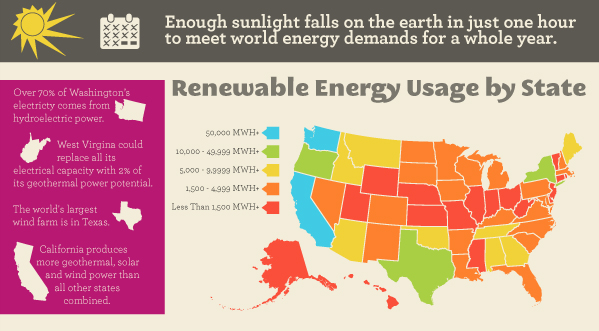In the July 23, 2012, edition of CQ Weekly, on page 1483, Randy Udall, brother of Sen. Mark Udall (D-CO), is quoted as saying, regarding the potential for development of environmentally unsound oil shale development, “underlying it is this question that everyone is asking: ‘Well, where is the world going to get its liquid fuels 20 years from now?’” The truth of the matter is: there is no reason we should be using liquid fuels 20 years from now.
Thanks to the work of Mark Jacobson, of Stanford, and Mark Delucci, of UC Davis, we know it is possible to power the entire global economy without carbon-based fuels, by 2030, using technologies already in existence, and in use, in 2009. We also know it is possible to do this without spending more than we will have to spend to upgrade and maintain the existing energy infrastructure, designed to deliver fossil energy to consumers and industry.
Furthermore, we know that the renewable energy paradigm will mark a major, positive transition, away from the own-and-tariff model of commerce, rooted in the logic of the old feudal system, and toward an efficiency-and-service model commerce, which becomes possible with distributed generation, and a genuinely decentralized energy production infrastructure. Fossil fuels impose economy-wide externalized (hidden) costs we all have to pay, while clean energy production methods can achieve similar pricing, without any of those extra costs.
The old combustible fuel model is reaching its limits in terms of generative economic potential, while clean energy holds the promise of more jobs, higher-paying jobs, longer-term employment, and community-based control of the energy sector:
We are running out of ways to extract coal cheaply without literally blowing mountains apart, wiping them off them map, which carries very significant costs. Coal is an 18th-century technology not optimized for our 21st century needs. While employment from coal steadily declines, the risks and costs of its production mount, and coal-rich communities continue to experience chronic endemic poverty which the industry has been unable to solve.
We are running out of easy access to oil; the remaining reserves are trapped in undeveloped remote wilderness, behind high-risk, low-yield extraction processes that require major new dirty energy infrastructure to be built. Their development will impede investment in and development of better, cleaner, more efficient alternatives. We can do much better.
The fossil fuel saturation problem, known to states like Texas as an ongoing “energy emergency”, means we need to be actively searching not only for alternative fuels, but also for investment opportunities where we can build in drivers of more generalized prosperity, i.e. a restored and strengthened middle class, and accelerating returns in productive capacity.
We know that there are technologies on the horizon that far outstrip those already in use in 2009, which will make solar and wind the most efficient, productive and affordable means of power generation the world has known. For instance:
- Better Place is making it possible to produce not only state-of-the-art electric vehicle recharging infrastructure, with battery switch-out stations that keep drivers stopped for less time than gasoline refueling.
- Solar Roadways is building highways that can produce an unprecedented amount of cheap solar-sourced electricity.
- Solar Impulse has already built and flown solar-powered aircraft that can fly around the clock without landing to refuel, and use solar-sourced energy during the dark hours of the night.
- Advances in magnetic levitation technology are making it possible to build wind turbines with less friction than ever, and so more turning power (wind-based generation potential) than by any other means.
- Advances in clean-powered transport now make it possible to run major metropolitan transport infrastructure fuel free.
The only serious question about the future of energy is: will we do all that we can to build the clean energy economy we need for the complexities of the 21st century? Whatever nation leads the global race to 100% combustion-free renewable clean energy will lead the global economy for the foreseeable future, as we have no better way to produce virtually unlimited new energy. In the clean energy economy, technological pioneers will control pricing and market dynamics for centuries.
What’s more, we know from the mobile phone boom that inexpensive, lightweight electric-powered devices spread more easily, rapidly and widely, than built-in heavy-transport-demanding industrial infrastructure: so, where cell phones spread throughout even remote corners of Africa, and reliable land-lines have not reached as many people, electrified transport that can be charged from wind and sunlight can reach more people than liquid fuel infrastructure, which requires reliable frequent transport of heavy liquid fuels and the continued extraction of ever more scarce finite resources.
We are already free of the need for combustible liquid fuels. Now, we need to build the infrastructure that will allow us to liberate ourselves from the corrosive economic dynamics of dependence on combustible liquid fuels.
Further information & real solutions:
- Jacobson & Delucci: A path to sustainable energy by 2030
- FuelFree.me: for information on the coming zero-combustion economy
- Carbon Fee and Dividend: to Spur Job-creation, Industrial Boom
- Citizens Climate Lobby: political will for a livable world
- Citizens Climate Lobby: progress on Capitol Hill
- Building a Green Economy: On the Economics of Carbon Pricing & the Transition to Clean, Renewable Fuels
- National Sustainable Communities Coalition
- – -
- Originally published August 1, 2012, at TheHotSpring.net
- To reference and share the original article, use the shortlink: bit.ly/noliquidfuels
